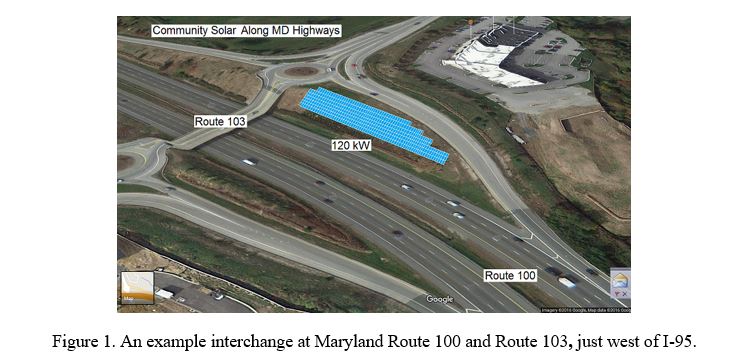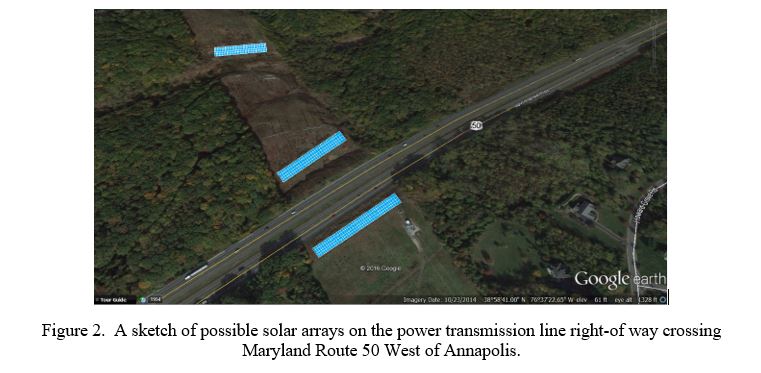Electric Transportation and Community Solar - A worthy but complex Multi-Agency Initiative
Bob Bruninga, PE
In order for the Electrification of Transportation to have a meaningful effect on carbon emissions reduction, the energy will need to come from renewable sources. Most people who buy EV’s do want to purchase clean renewable solar or wind power. But many EV owners may not be in permanent homes for the decade needed to invest in their own solar roofs and east of the Mississippi, half or morehomes are too shaded for solar. These EV drivers will need to subscribe to solar or wind from their utility or invest in their own local community solar. Progressive states need to look at enabling community solar now to be ready for the coming growth in Electric Transportation and what better place than along our highways and other existing utility rights-of way.
Although surveys have shown1 that as many as 83% of EV purchasers say they use or will subscribe to solar or wind energy for charging, not every EV owner has a sunny roof or permanent property on which to invest in solar. That is why Community Solar programs are so important to our future. By supporting community solar, states can allow anyone to buy-into solar, not just the smaller subset who actually own their own property and have no intention to move for the next decade.
A significant hurdle to community solar is where to put them. Land is scarce and existing structure and land owners will often want their own roofs for their own solar and we should not be turning arable farmland into solar farms in competition with our food supply.This is where states need to look at their other land assets and see where isolated or sequestered state lands can be used for community solar. A perfect example are the isolated bits of land in existing highway rights-of-way as shown above. Only the states have the authority to work across all of the Transportation, Highway, Energy, Environmental, and Public Service Agencies to make this multi-agency initiative to support community solar possible.
Another possibility that has even greater promise than highway rights-of-way are the thousands of miles of tree-less maintained Transmission line and Pipeline rights of way. In these areas there is a significant existing cost to maintain the land tree-less already and so these strips of land are ideal for solar use without reducing existing tree cover and carbon capture.
This is a win-win-win for the state, for the large percentage of shaded EV owners and for the environment:
- Suitable state highway and utility power-line right-of-way lands exist
- Such land is often already cleared, fenced and secured in most cases
- Solar panels can reduce existing tree trimming, mowing and landscape maintenance
- Solar panels can reduce run-off when combined with water collection
- Hill cuts and berms with slopes are twice as effective as flat land for solar panels
- The community solar power would be broadly distributed throughout the state
- EV owners with shade are more than willing to buy-in to get clean power for their EV’s
- This clean energy project could be paralleled with EV promotion initiatives
- Every 12 solar panels can charge an EV everyday forever to meet the American average 40 miles/day
But most importantly, viable community solar involves everyone, not just the half of the typical-half of homeowners with sunny roofs that also intend to stay in the home for more than a decade.
A. Community solar eliminates the contention between Sunny-have's and Shady-have-nots in the political discourse. It defuses the contention over net metering.
B. Community solar on state rights-of-way puts the future of solar energy in plain view of everyone where we live and drive.
References:
[1] 83% buy clean: http://www.greencarreports.com/news/1099531_electric-car-drivers-tell-ford-well-never-go-back-to-gasoline
About the Newsletter
Editors-in-Chief

Jin-Woo Ahn
Co-Editor-in-Chief

Sheldon Williamson
Co-Editor-in-Chief
TEC Call for Articles 2023 - Advances in Charging Systems
The TEC eNewsletter is now being indexed by Google Scholar and peer-reviewed articles are being submitted to IEEE Xplore.
To submit an article click here.




